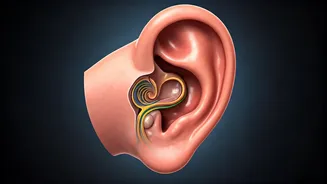The Unspoken Language
The conventional belief that interview success primarily depends on verbal answers is challenged by the 7-38-55 rule. This rule, popularized by Ankur Warikoo,
suggests that only 7% of interview success comes from the words spoken. A significant 38% relies on the tone of voice, while a staggering 55% depends on body language and facial expressions. This means your non-verbal cues have a substantial impact on how the interviewer perceives you, often overshadowing the actual content of your responses. For instance, a confident posture and a steady gaze can build trust and make your answers appear more convincing, irrespective of their literal content. Conversely, nervous gestures or a monotone voice can undermine even the most well-prepared responses.
Body Language Matters
Body language encompasses everything from your posture and gestures to your eye contact. Maintaining open body language, like uncrossed arms and a relaxed yet upright posture, conveys approachability and confidence. Direct eye contact signifies honesty and attentiveness. Conversely, slouching, fidgeting, or avoiding eye contact can signal insecurity or disinterest. For example, leaning slightly forward while listening demonstrates engagement. Using hand gestures thoughtfully, but not excessively, can also enhance your ability to communicate effectively. Being mindful of these details allows you to subtly project a more positive and professional image, making a favorable impression on the interviewer. This approach helps the interviewer form a more positive image of the candidate, regardless of their responses.
Tone of Voice
The tone of voice includes the pitch, pace, and volume of your speech. It plays a crucial role in conveying the underlying meaning of your words and influencing how your answers are received. A confident and steady tone can make your statements more persuasive and credible, even when discussing complex ideas. Speaking too quickly might make you sound nervous, while speaking too slowly could suggest a lack of enthusiasm. Varying your tone adds expressiveness and keeps the interviewer engaged. For instance, modulating your voice to emphasize key points can highlight your understanding and expertise. Practicing vocal control can enable you to express assurance and sincerity during your interview, enhancing overall impact. This level of preparation ensures that the candidate is able to display their confidence.
Facial Expressions Revealed
Facial expressions are a window into your emotions and can significantly affect how interviewers perceive your demeanor. A genuine smile, for example, conveys warmth and approachability. Conversely, a blank or stern expression may make you seem unfriendly or uninterested. Maintaining appropriate facial expressions can make your communication more authentic and relatable. Practicing mindful expressions can help you use your face to reinforce your message. The key is to match your facial expressions with the content and context of your answers. If you're discussing a challenge you overcame, a serious but composed expression can convey resilience. The facial expression can support the candidate’s overall communication in the interview.
Natural Improvement Strategies
The key to mastering non-verbal cues isn't forcing confidence but developing it naturally. Start by practicing in front of a mirror or recording yourself to identify areas for improvement. Seek feedback from trusted friends or mentors. Focus on relaxation techniques, like deep breathing, to manage nervousness. Preparation is essential; the more you know about the role and company, the more relaxed you'll be during the interview. Practicing common interview questions and rehearsing your answers can boost your confidence, allowing your body language and tone to come across as more genuine and confident. This approach helps create a natural, polished persona that is likely to impress interviewers. This would also facilitate more confident communication, leading to an increased probability of job success.
Putting It Together
Successfully applying the 7-38-55 rule involves integrating your verbal and non-verbal skills. While preparing the content of your answers, consider how you'll deliver them. Pay attention to your tone, body language, and facial expressions during practice sessions. This integrated approach ensures that your words and actions complement each other, resulting in a more persuasive and authentic presentation. By mastering these non-verbal cues, you can significantly enhance your interview performance. The emphasis is on authentic and confident communication, which will ultimately play a crucial role in improving performance. This combination of strategies ensures that candidates make a positive impression and convey their message effectively.












